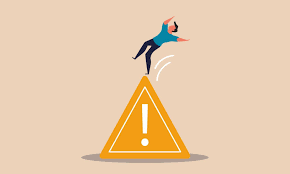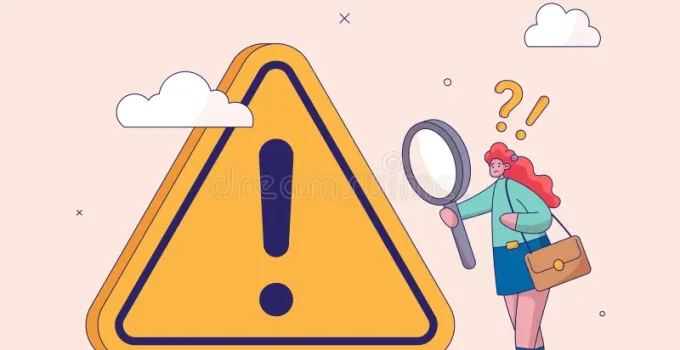Page Contents
ToggleCritical failure is a term widely recognized across various fields, from engineering and technology to gaming and psychology. It describes an extreme breakdown or malfunction in systems, processes, or outcomes that leads to significant, often catastrophic, consequences. This article delves into the concept of critical failure, exploring its definitions, examples, causes, and strategies to mitigate its effects.
Defining Critical Failure

Critical failure refers to a situation where a system, mechanism, or process fails to perform its intended function to a catastrophic extent. Unlike minor errors or manageable malfunctions, failures disrupt normal operations and often result in severe consequences. This concept is not confined to one domain; it is relevant to technology, engineering, health, entertainment, and even human decision-making.
In technology and engineering, failure can denote the collapse of critical infrastructure, such as power grids, communication networks, or transportation systems. In gaming, it represents an in-game action that backfires spectacularly, often due to a specific roll or condition.
Critical Failure in Engineering and Technology
Engineering and technology rely heavily on precision and predictability. When these systems experience failure, the results can be devastating. Examples include the catastrophic collapse of a bridge, the malfunction of an aircraft, or the failure of cybersecurity systems leading to data breaches.
Key causes of critical failures in these fields include:
- Design Flaws: Poorly designed systems or components can lead to vulnerabilities.
- Human Error: Miscalculations, oversight, or negligence during operation or maintenance.
- Material Fatigue: Prolonged stress or improper use of materials.
- Environmental Factors: Extreme weather conditions, earthquakes, or other natural phenomena.
- Lack of Maintenance: Insufficient upkeep of equipment or infrastructure.
Critical Failure in Gaming
The term “critical failure” is commonly used in tabletop role-playing games (TTRPGs) and video games. It signifies a situation where a player rolls the lowest possible outcome on a chance-based action, often leading to disastrous or unintended consequences.
In TTRPGs, such as Dungeons & Dragons, rolling a “natural one” on a 20-sided die typically results in a failure. This might cause a character to harm themselves, their allies, or exacerbate an already tense situation. Critical failures add depth and unpredictability to games, making them exciting and challenging.
Video games also incorporate critical failure mechanics, often as a way to balance gameplay or add an element of risk. For example, a failure in a strategy game could lead to resource depletion or unexpected enemy advancements.
Psychological Perspectives on Critical Failure
From a psychological standpoint, critical failure can describe human behavior or decision-making that leads to adverse outcomes. In high-stress situations, individuals may make poor choices due to cognitive biases, lack of information, or emotional overload.
The concept of “catastrophic thinking” relates to failure in this context. When individuals expect or focus on worst-case scenarios, their actions may inadvertently lead to self-fulfilling prophecies, resulting in failure.
The Role of Redundancy in Mitigating Critical Failure

One of the most effective strategies to prevent critical failure is the incorporation of redundancy in systems. Redundancy involves creating backup systems or processes that can take over when the primary system fails.
For example:
- In Aviation: Aircraft are designed with multiple engines and fail-safe mechanisms to ensure safe operations even if one system malfunctions.
- In Technology: Data centers often use redundant servers and storage to protect against failures during outages.
- In Medicine: Hospitals rely on backup generators to maintain power for life-saving equipment during blackouts.
Predicting and Preventing Critical Failure
Predicting critical failures requires a proactive approach to risk assessment and mitigation. Modern techniques include:
- Simulation and Modeling: Predictive models simulate potential failure scenarios, enabling planners to develop effective countermeasures.
- Regular Inspections: Scheduled maintenance and inspections help identify vulnerabilities before they lead to failure.
- Use of Advanced Analytics: Big data and AI tools analyze historical data to predict patterns leading to critical failures.
- Training and Awareness: Educating individuals about risks and best practices can reduce human error.
Examples of Historical Critical Failures
Critical failures have occurred throughout history, providing valuable lessons for future prevention. Some notable examples include:
- The Challenger Disaster: In 1986, the space shuttle Challenger exploded due to the failure of an O-ring seal, emphasizing the importance of material testing and quality assurance.
- The Blackout of 2003: A major power outage in North America, caused by a series of cascading failures in the electrical grid, highlighted the need for robust infrastructure.
- The Deepwater Horizon Oil Spill: This catastrophic event in 2010 demonstrated the dangers of inadequate safety protocols in high-risk industries.
The Human Element in Critical Failure

Despite technological advancements, the human element yowestogel remains a significant factor in failures. From misjudgments in decision-making to communication breakdowns, human errors can amplify risks.
Organizations can reduce human-related critical failures by:
- Promoting a culture of safety and accountability.
- Encouraging open communication to identify potential risks.
- Investing in comprehensive training programs to improve skills and situational awareness.
The Role of Resilience
Resilience plays a critical role in managing and recovering from failures. It refers to the ability of systems, organizations, or individuals to adapt and recover after a failure. Building resilience involves:
- Designing Adaptive Systems: Systems that can self-correct or adapt to changes are less likely to experience critical failures.
- Fostering Mental Resilience: Training individuals to remain calm and focused during crises can improve decision-making.
- Implementing Recovery Plans: Detailed contingency plans ensure swift recovery and continuity.
Conclusion
Critical failure is a multifaceted concept that affects diverse domains, from engineering and gaming to psychology and decision-making. Understanding its causes and consequences is vital for developing robust systems and strategies to prevent such failures. By embracing redundancy, improving human factors, and building resilience, individuals and organizations can mitigate the impact of failures and ensure stability in uncertain situations.




